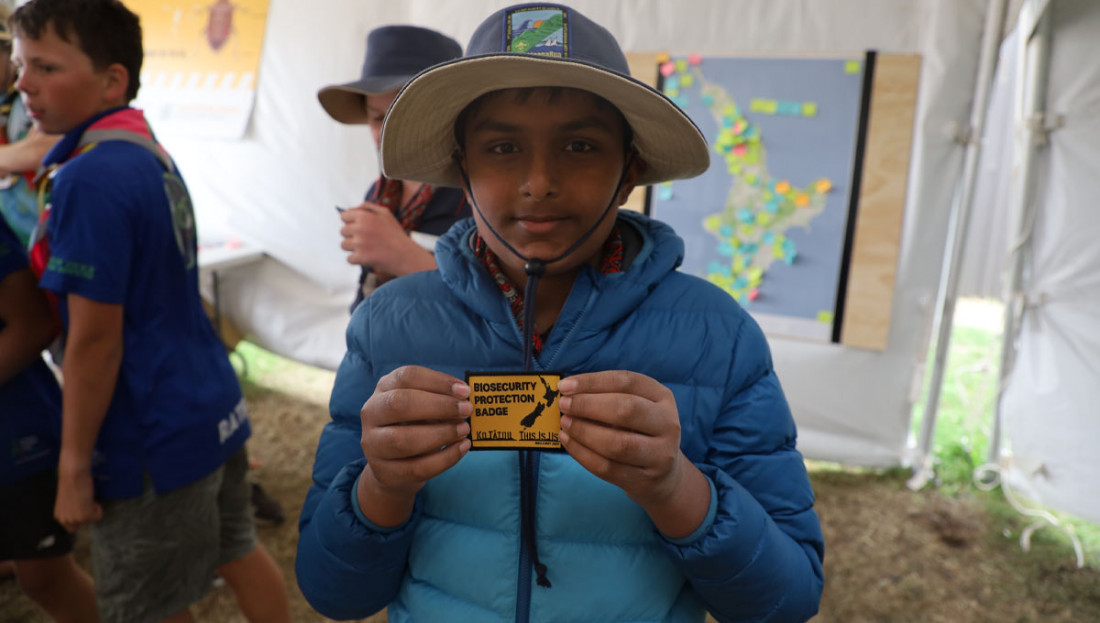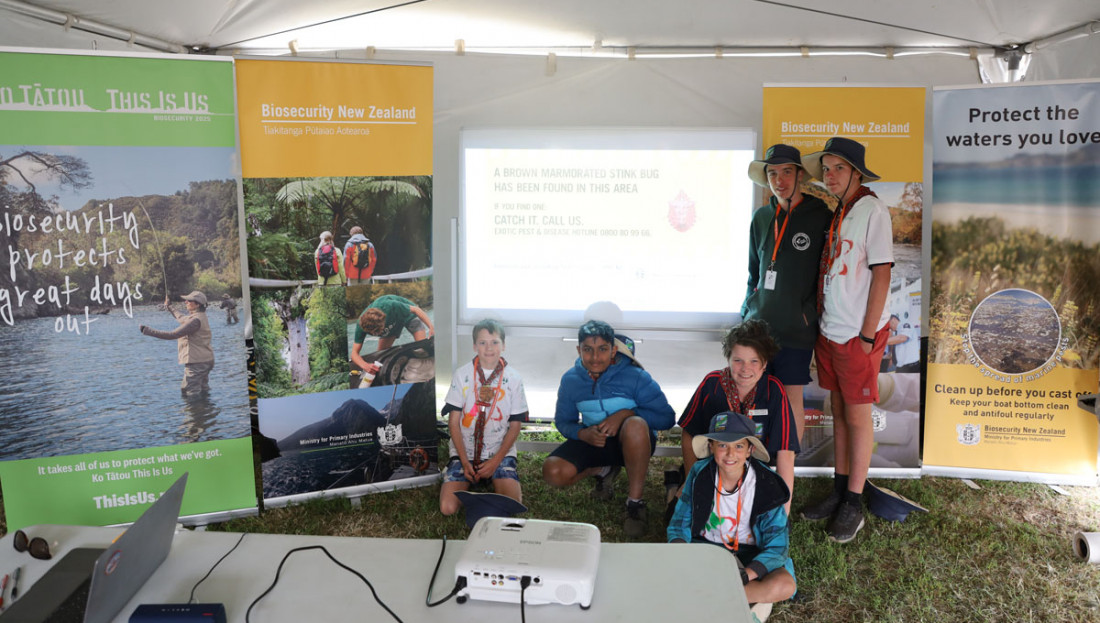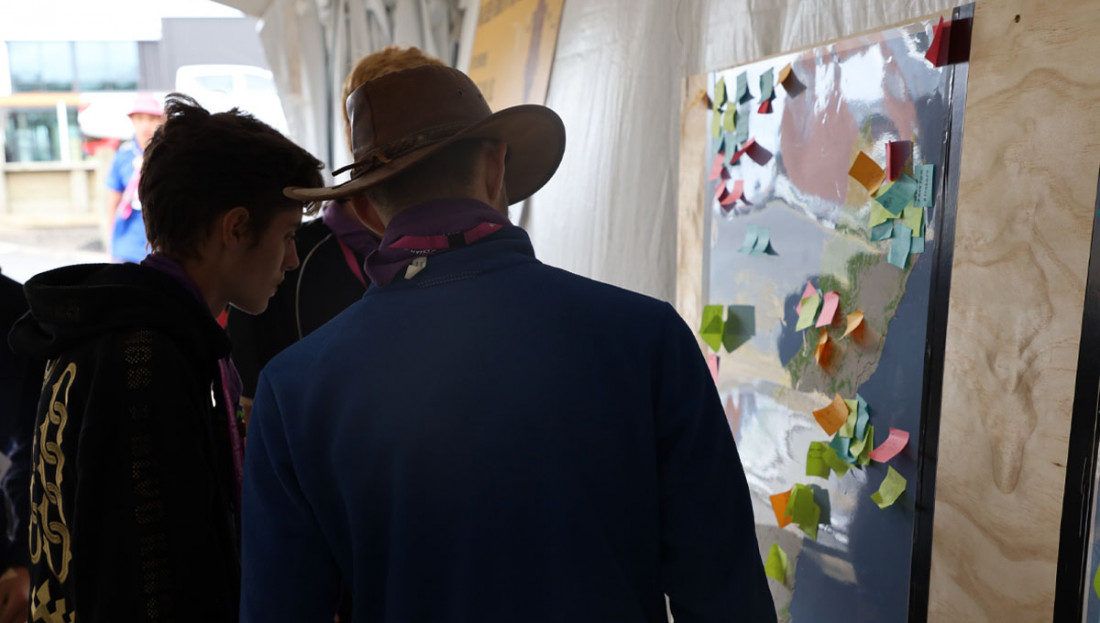Kiwi kids learn how to keep pests out
Date
10 January 2020
With the brown marmorated stink bug and Mycoplasma bovis becoming household names, New Zealand is vulnerable to more biosecurity threats than ever before. But a new interactive session, developed by Biosecurity New Zealand, is recruiting Kiwi kids in the fight against unwanted pests and diseases.
The first-of-its-kind session, which ran as part of the triennial New Zealand Scout Jamboree at Mystery Creek in Hamilton this month, saw more than 1000 youngsters aged 11-15 learn the importance of biosecurity.
“Our whole economy here in New Zealand relies on us remaining free from a lot of the pests and diseases which plague other countries,” said Ruth Burdekin, the Biosecurity New Zealand senior business advisor who facilitated the initiative.
“The session was really popular with the kids.
“We ended up running it four times a day over six days, and had twice as many kids participate than expected.”
The session required Scouts to use the coordinated incident management system (CIMS) to solve the scenario of what they could do if the menacing brown marmorated stink bug were to be found in New Zealand.
And in true Scout spirit, they earned themselves a biosecurity protection badge for their participation.
“It helped to teach the kids the importance of biosecurity, how challenging it is, and the kinds of places that they can fit into the system and make a contribution.”
For kids, that contribution includes being able to identify the bugs if they see them – a challenge that Burdekin, a former Scout and recipient of the Queen’s Scout Award, said was met with enthusiasm.
“They're really excited about the fact that they can actually do stuff to help as well, which is something we're aiming for.
“We even had some Scouts return to our base with brown shield bugs they’d caught nearby. These bugs have some of the BMSB markings but are a lot smaller, have slightly different colouring and a different nose – but the fact that the kids were taking notice is a big win!”
BMSB is regarded as our country’s number one pest threat, which if established could knock $3.6 billion from the economy over 20 years.
The bug is roughly the size of a 10-cent coin but has an insatiable appetite, feeding on more than 300 host plants, including citrus, pipfruit, stonefruit, berries and grapes, corn, honeysuckle and roses. It could devastate our horticulture industry, so we need a team of 4.7 million people – that’s all New Zealanders – to keep it out, said Burdekin.
Scouts also learned about other biosecurity threats, including kauri dieback, the Queensland fruit fly, didymo, and M. bovis.
“I was blown away by how much the Scouts already knew about biosecurity,” said Burdekin.
“Cleaning your shoes, camping equipment, and sports gear before entering different forests was widely considered something that you just do. The kids, particularly Scouts from Auckland and Northland, were really clued up about kauri dieback.”
Most of the Scouts had watched at least one episode of New Zealand reality television series Border Patrol and understood what they can and can’t bring into the country – “and this session was a great, fun way to drive home why that is important,” said Burdekin.
“One Scout spoke to me after the session to say how much he enjoyed it, and asked what he needed to do to get a job at the Ministry for Primary Industries when he’s older!”
Burdekin said the session was about raising awareness that biosecurity isn’t just best left to MPI or the experts.
“Biosecurity is New Zealand-wide, and we all need to be thinking about it.”
MPI is in talks with Scouts New Zealand about how it can further promote a culture of proactive biosecurity management across the organisation.


